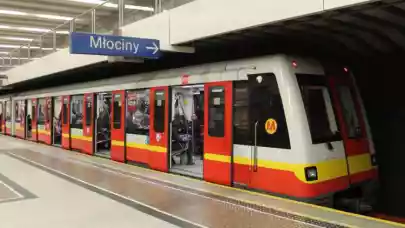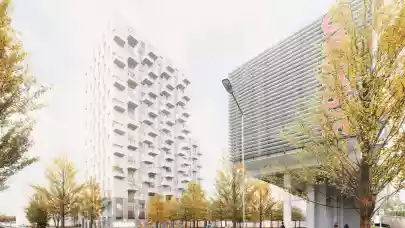
Five metro lines and a tram network that will connect all 18 districts of Warsaw by 2050. These are the main elements of a new study for the expansion of rail transport in Warsaw, which was presented by the mayor of the city, Rafał Trzaskowski last week.
New transport investments are planned by the capital city at the same time as a new study of the city's conditions and directions for development. The capital does not want to stop at two metro lines (the second is due to be completed in about three years). Three more routes are to be built over the next 27 years.
"Almost 60 per cent of Warsaw's residents use public transport, and over 90 per cent are satisfied with it. We are proud of this and will develop public transport. We want rail transport to reach all 18 districts of the capital and by 2050 more than half of Varsovians will have a metro within a short, kilometre-long walk. And where there will be no metro, tram transport will reach. We are also close to the philosophy of the 15-minute city. That all services, and things that are important to residents should be within a 15-minute walk or by public transport. We hope that in May the study will be ready for display so that public consultations can begin in May or June," said Warsaw Mayor Rafał Trzaskowski.
As part of the work on the study, more than 700 km of metro and tram routes were surveyed. According to the latest data from the Central Statistical Office, 1.7 million cars were registered in Warsaw, of which 1.4 million were passenger cars. This means 768 cars per 1,000 inhabitants. In a decade, the number of passenger cars has increased by 40 per cent in Warsaw. "In other European cities, there are about half as many," stressed the mayor of Warsaw.
Trzaskowski also presented data on transport efficiency, which shows that a car is able to transport around 1,500 people per hour in a single transport line, a bus 4,000-5,000, a bus on a busway 10,000, a tram 13,000 and a metro 50,000.
When the metro is extended to five lines, 17 of the capital's 18 districts will have access to it. Currently, 28 per cent of our city's inhabitants are within walking distance (approximately 1,000 m) of a metro station. When the investment is completed, more than half of Warsaw's residents will be able to use the fastest, most comfortable and safest means of transport in less than a quarter of an hour's walk. The length of the metro line will increase from 41.5 km to 113 km. Białołęka, Wilanów, Praga Południe, Ochota, Ursus and Włochy will gain access to the metro. The underground railway will also reach the borders of Rembertów and Wawer.
During work on a new transport masterplan for the capital, the Bureau of Architecture and Spatial Planning of the City of Warsaw examined around 710 km of underground and tram routes. PKP PLK's plans were also taken into account - in the context of the concept for a new cross-city line. The target structure of the city, the number of inhabitants and jobs were taken into account.
According to the Warsaw authorities, the metro is a great pro-development, centre- and city-forming impulse. It optimises the use of space and improves the quality of development of the entire area. Thanks to the extension of the metro, all districts are to have a chance for development. That is why, according to the capital's city hall, the metro is to be the primary means of urban public transport in the capital. Its network will ensure efficient, fast and reliable long-distance travel around the city. It will connect densely populated fringe districts with the city centre and areas with a high concentration of workplaces and services.
An unsolved problem of the capital's underground railway is the lack of layered property rights in Poland. Therefore, the underground railway in Warsaw is always built mainly on plots of land owned by the city, i.e. mainly under the streets. The system duplicates existing transport routes instead of building new ones. For this reason, some areas with the densest buildings and high population cannot have access to the metro, although they would benefit most from it.



